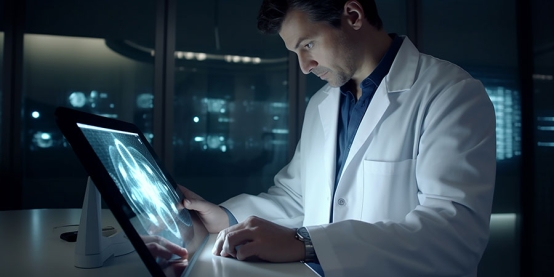

Medical device manufacturers operate in a highly regulated environment where patient well-being and compliance cannot be compromised. Risk management software has become a cornerstone in addressing these demands, providing organizations with structured tools to anticipate hazards, control risks, and maintain continuous compliance across every stage of product development and usage.
Medical device manufacturers operate in a highly regulated environment where patient well-being and compliance cannot be compromised. Risk management software has become a cornerstone in addressing these demands, providing organizations with structured tools to anticipate hazards, control risks, and maintain continuous compliance across every stage of product development and usage.

Every medical device, whether a basic surgical instrument or a sophisticated implantable system, carries inherent risks. Without proper oversight, these risks can lead to patient harm, recalls, and regulatory actions. Risk management establishes a framework for identifying hazards, estimating their potential impact, and introducing preventive or corrective measures. Standards such as ISO 14971 require companies to adopt systematic practices to ensure safety throughout design, manufacturing, and post-market monitoring.
Traditional approaches relying on manual records and spreadsheets often create inefficiencies and blind spots. Risk management software replaces these fragmented processes with a centralized digital platform. By linking hazards, controls, and verification activities, the software ensures traceability and transparency across teams. This reduces compliance burdens, improves oversight, and strengthens the culture of accountability in product development.
Comprehensive risk management solutions are equipped with tools that directly address industry-specific needs:
Hazard Identification Modules to evaluate potential device failures and user-related risks.
FMEA and Risk Prioritization Tools that highlight the most urgent threats and guide corrective actions.
Traceability Matrices that connect risks to design elements, testing, and regulatory submissions.
Real-Time Dashboards offering visibility into compliance performance and emerging trends.
These capabilities simplify audits, streamline reporting, and minimize delays in product approvals.
Global regulations require consistent and documented risk management practices. Leading software platforms are designed to align with ISO 14971, FDA 21 CFR Part 11, and other regional frameworks. This ensures that electronic records, signatures, and workflows meet regulatory expectations. By embedding compliance features into everyday tasks, companies can avoid costly oversights while accelerating access to international markets.
Effective risk management extends far beyond product launch. Advanced software solutions enable teams to manage risks across the full lifecycle:
Design Phase: Early detection of hazards reduces redesign costs later.
Manufacturing Stage: Monitoring process risks ensures quality standards are met.
Post-Market Use: Integration with surveillance systems helps track complaints, adverse events, and real-world device performance.
This end-to-end approach transforms risk management into a continuous improvement process.
Medical device development is a multidisciplinary effort involving engineers, clinicians, regulatory experts, and quality managers. Risk management platforms consolidate all communication and documentation into a single system, giving every stakeholder access to the same verified data. This fosters teamwork, eliminates duplication, and increases confidence in compliance records.
Introducing risk management software requires thoughtful planning. Organizations must allocate resources for selection, system validation, and employee training. Resistance may arise when teams transition from manual to digital systems, and integration with existing tools can be technically demanding. Success depends on leadership support, clear change management strategies, and phased adoption plans.
The next generation of platforms is expected to integrate advanced technologies such as AI-driven analytics to identify risk patterns and cloud-based collaboration for global teams. Cybersecurity risk analysis is also becoming a central component as connected medical devices expand. Over time, software will increasingly serve not only as a compliance tool but as a strategic asset for anticipating risks and ensuring resilience in rapidly evolving healthcare landscapes.
Risk management software has become essential for balancing patient safety with innovation in the medical device industry. By centralizing risk-related processes, aligning with global regulations, and supporting collaboration, these systems empower manufacturers to deliver safer and more effective products. As technologies advance and regulatory demands intensify, the role of risk management software will only grow, safeguarding both patients and industry progress.